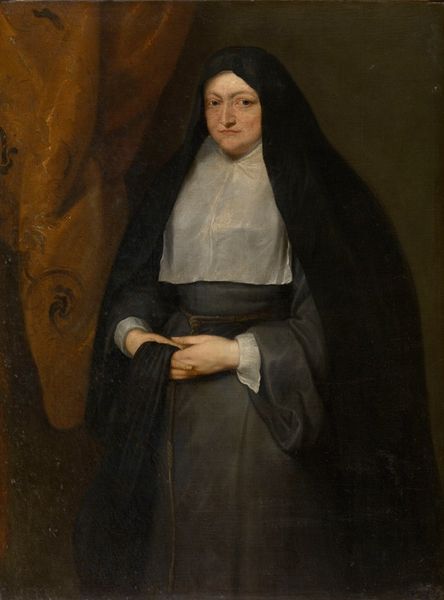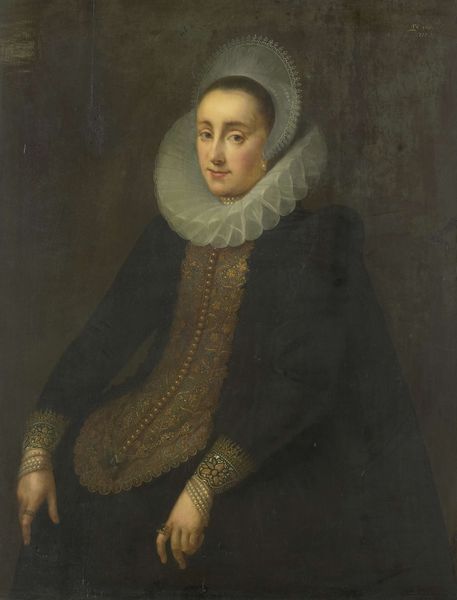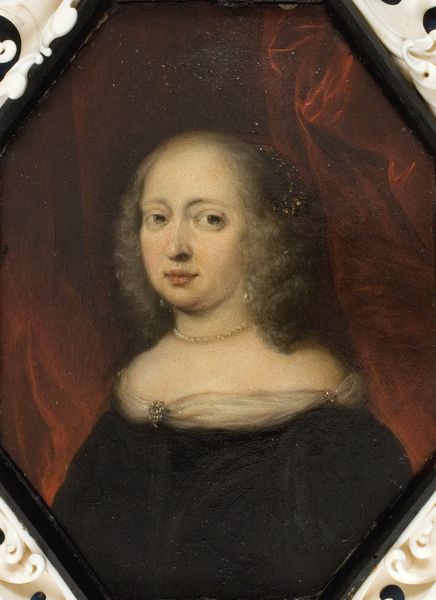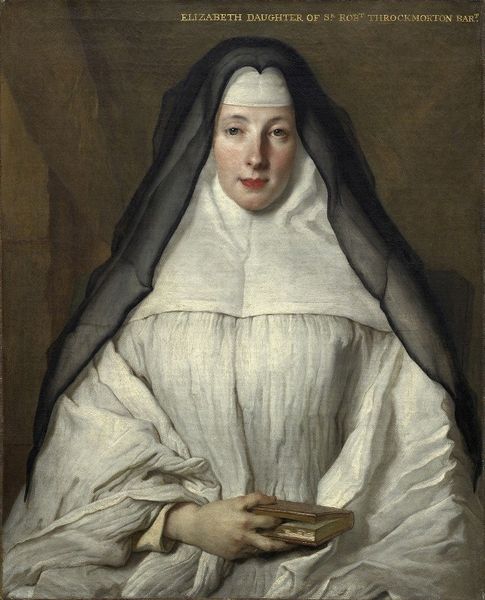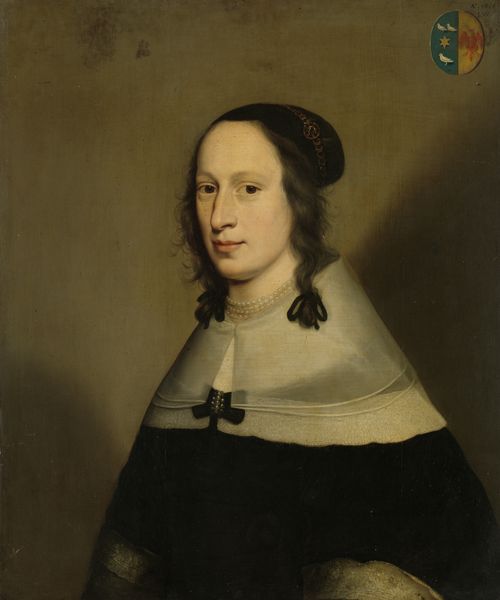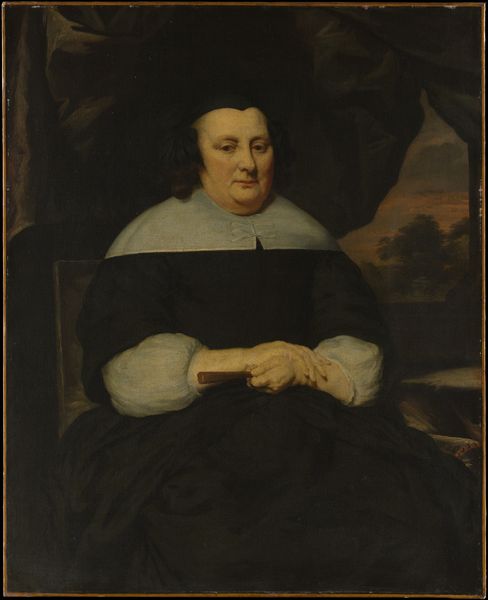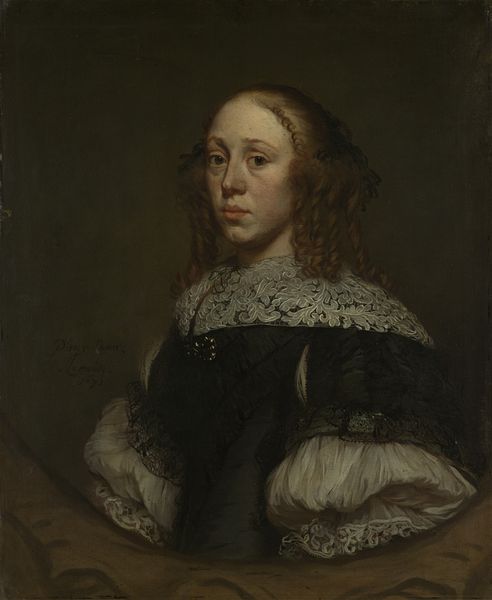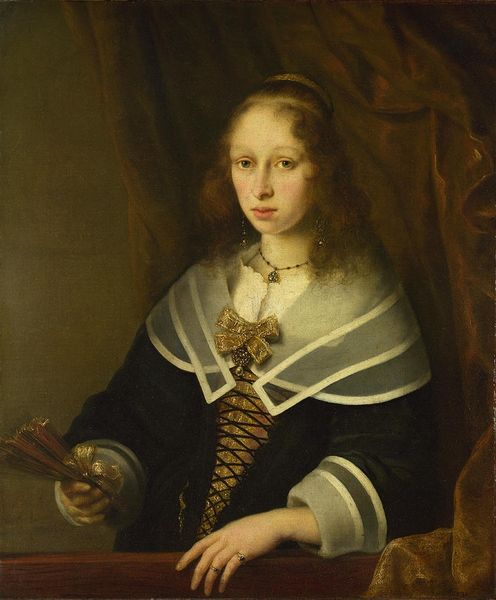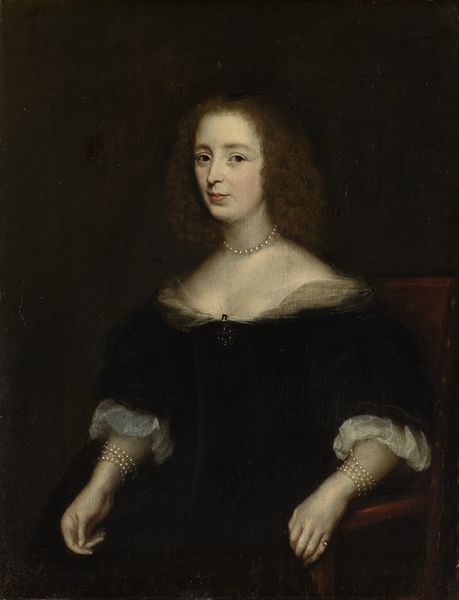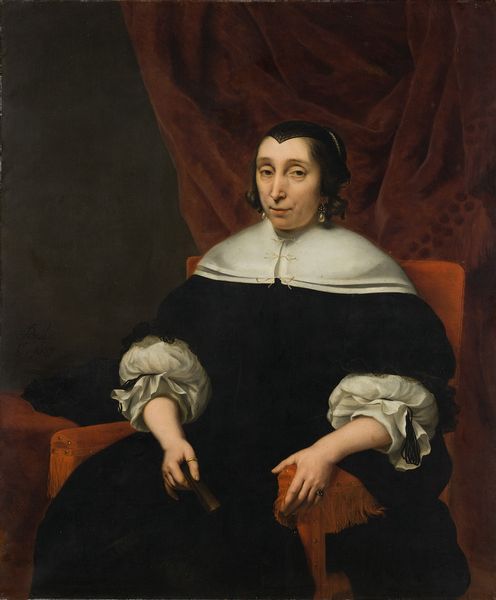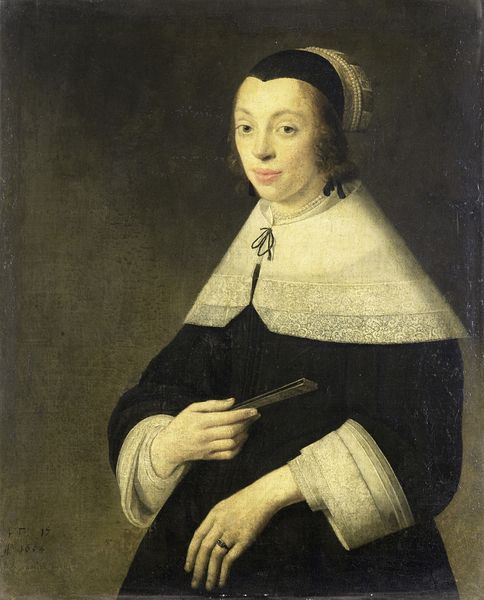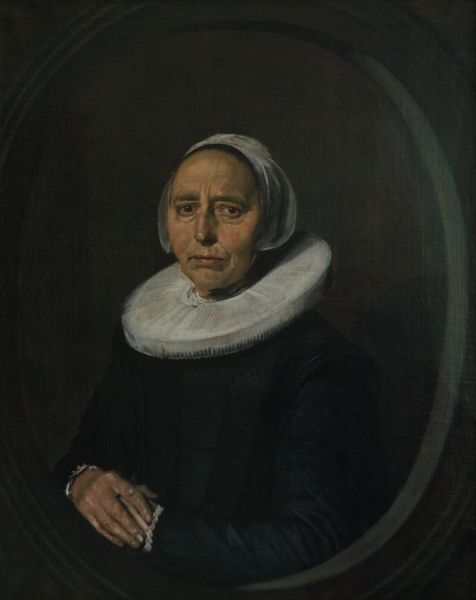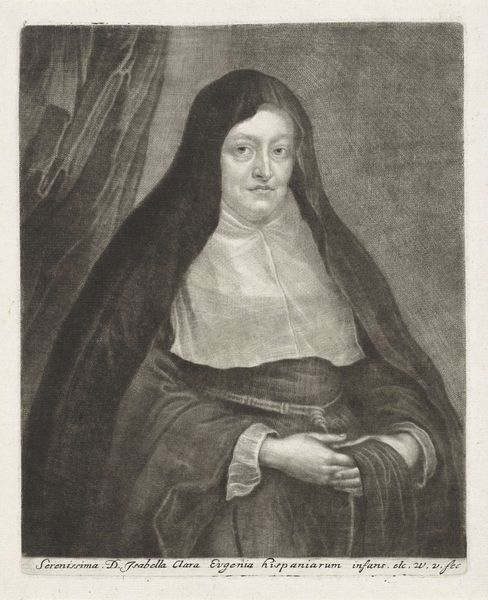
Portrait of Katharine Elliot (died 1688), Dresser of Duchess Anne of York and First Woman of the Bedchamber of Queen Mary of Modena, the first and second Wives of James II of England, respectively c. 1680 - 1700
0:00
0:00
painting
#
portrait
#
baroque
#
portrait image
#
painting
#
portrait reference
#
portrait head and shoulder
#
animal portrait
#
animal drawing portrait
#
portrait drawing
#
history-painting
#
facial portrait
#
portrait art
#
fine art portrait
#
digital portrait
Dimensions: height 76.3 cm, width 63.4 cm, thickness 2.9 cm, depth 4.3 cm
Copyright: Rijks Museum: Open Domain
Curator: Standing before us, we have a painting believed to be the work of John Riley, dating approximately from 1680 to 1700. The subject is Katharine Elliot, a prominent figure in the court of James II. Editor: Immediately, the darkness pulls you in, doesn’t it? She emerges from this somber void, with just these small flashes of bright fabric. I'm intrigued by the sheer economy of light here, what did it signify in its time? Curator: Well, considering Katharine's position—Dresser of the Duchess Anne and later First Woman of the Bedchamber for Queen Mary—this darkness, likely expensive dyes of the era, speaks volumes about her status and perhaps a certain gravity, even mystery, surrounding figures close to power. Look at how the fabric drapes; one can almost feel the weight of it. Editor: Absolutely. It's almost like she's cloaked, armored in privilege and shadowed secrets. Tell me more about Riley, as a painter, to portray this image. The artist creates an atmosphere with so few elements. What was his status as a London painter during the era? Curator: Riley was celebrated for his skill in rendering likeness and capturing something of his sitter’s character. Though perhaps not the flashiest Baroque artist, there is a sincere sense of quiet observation, no? And a keen understanding of the subtle politics embedded in fabrics and appearance. Editor: It’s funny how a simple portrait can make you question power dynamics, fashion, even grief if one were to attribute the sombre color to such emotions. You’ve brought up how painting and painter provide the material proof to understand 17th century aristocratic court in England. And as a result, how little our ways to perform those attributes of positionality and status change. I thank you for the image journey, from aesthetics to society. Curator: Indeed! I invite visitors to keep the image in mind when imagining a Baroque era English court in the London palace where royal intrigue could change your life for worse or better.
Comments
No comments
Be the first to comment and join the conversation on the ultimate creative platform.
